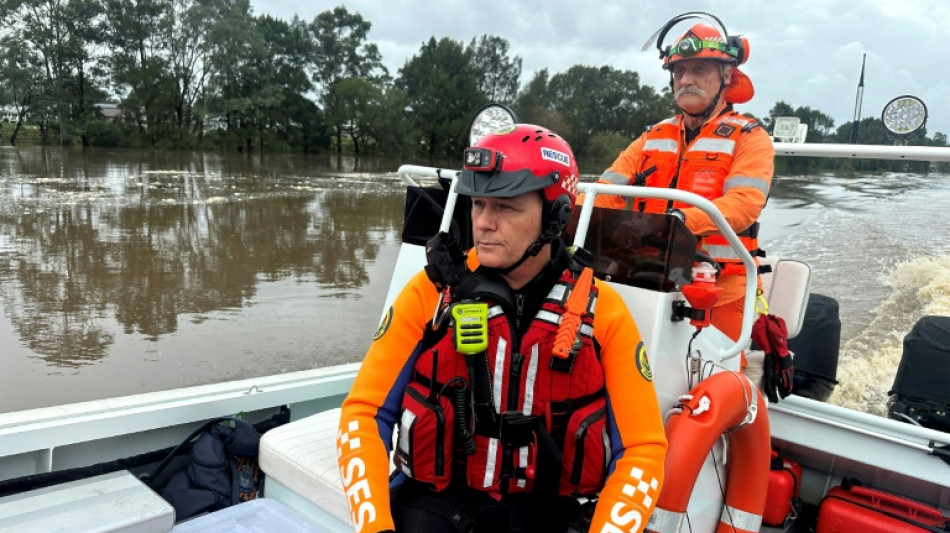

Flood victims stranded on roofs as downpours lash eastern Australia
Fast-moving floodwaters rose Wednesday in eastern Australia, inundating homes and leaving residents stranded on their roofs overnight, as authorities warned more rain was expected in coming days.
Storms have already dumped more than four months' of rain in just two days in parts of New South Wales, engulfing homes, businesses and roads in muddy waters, authorities said.
"We have a situation where the rain has been falling quite heavily and hard and it has not been moving away. Part of that is because the ground is saturated and the rivers are swollen," the state's emergency minister Jihad Dib told reporters.
Taree, about 300 kilometres (180 miles) north of Sydney, is a key area of concern for emergency services after 415 millimetres (16.34 inches) of rain lashed the town since Monday -- more than four times the mean monthly rainfall for May.
Authorities said that water levels of a river in Taree surged past a previous record in 1929, reaching 6.3 metres (20.6 feet) on Wednesday.
The rising floodwaters left locals stuck on roofs overnight, with rescuers unable to reach them due to the bad weather.
Taree resident Holly Pillotto, who was among those stranded on an upper level of her home, said she was desperate for assistance as floodwaters continued to rise.
"Our neighbours on the back verandah here are also stranded," she told Australia's Channel Nine. "It's a really dangerous spot to be."
Dib said that emergency services were "throwing everything we have into" reaching those affected.
State Emergency Service Chief Superintendent Dallas Byrnes said the situation was "incredibly dynamic and escalating", with more than 150 flood rescues conducted overnight.
"We've got a lot of people getting rescued from rooftops and from upper levels of houses," Byrnes told the national broadcaster ABC.
However, he warned that "conditions are quite treacherous and it may be that those aviation assets are unable to fly throughout the day".
The agency said that about 16,000 people, or 7,400 dwellings, would remain isolated until at least Thursday.
More heavy rain is expected in the coming 48 hours -- with some locations to receive 200 millimetres (7.87 inches) -- before conditions begin to ease, authorities said Wednesday.
Scientists have warned that heatwaves and other extreme weather events are becoming more frequent and more intense as global temperatures rise because of climate change.
O.Bauer--VZ



